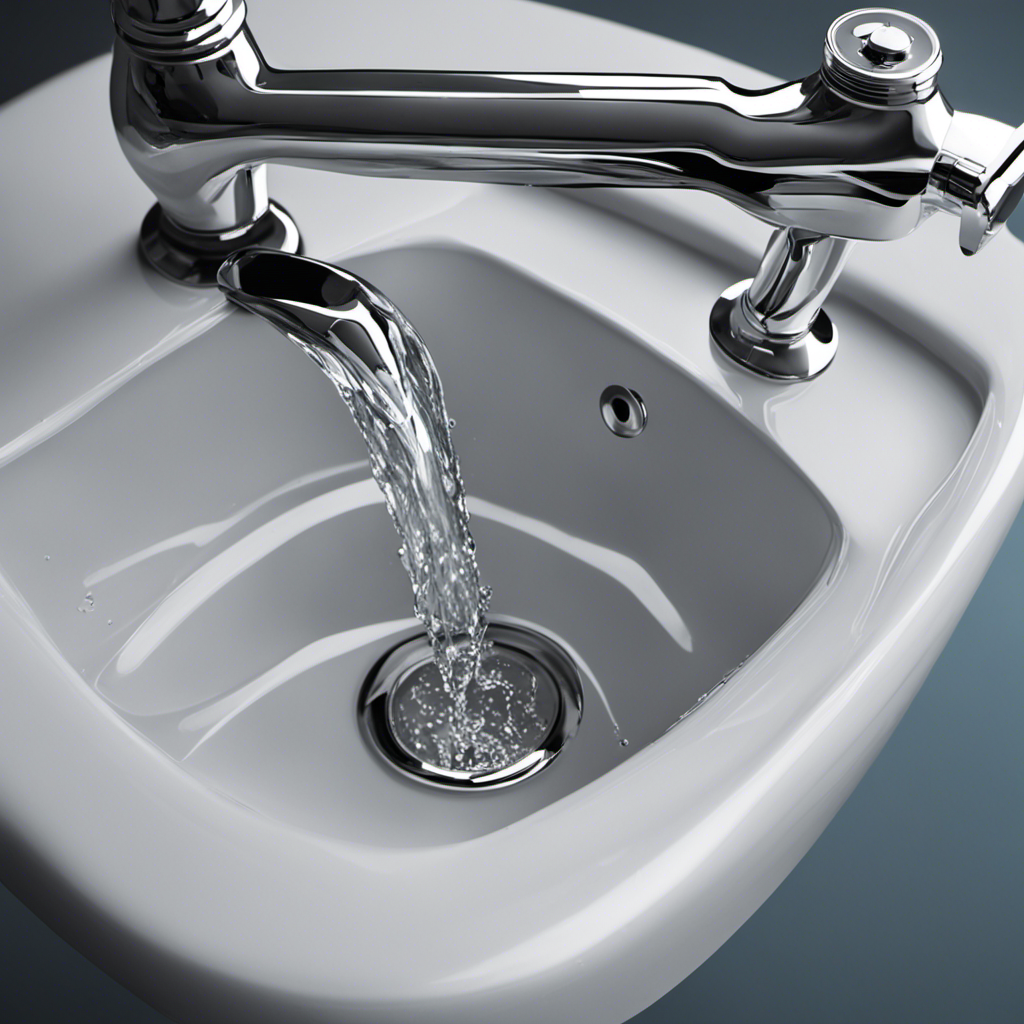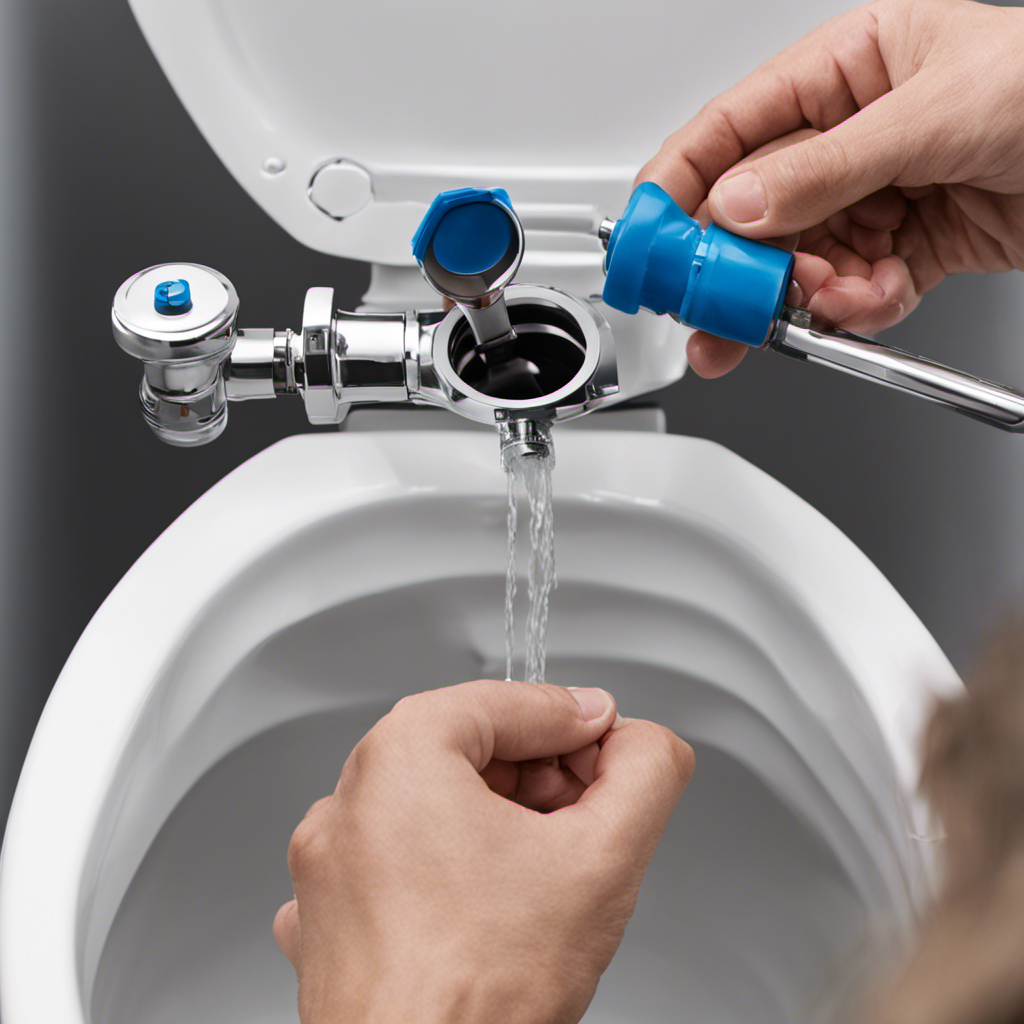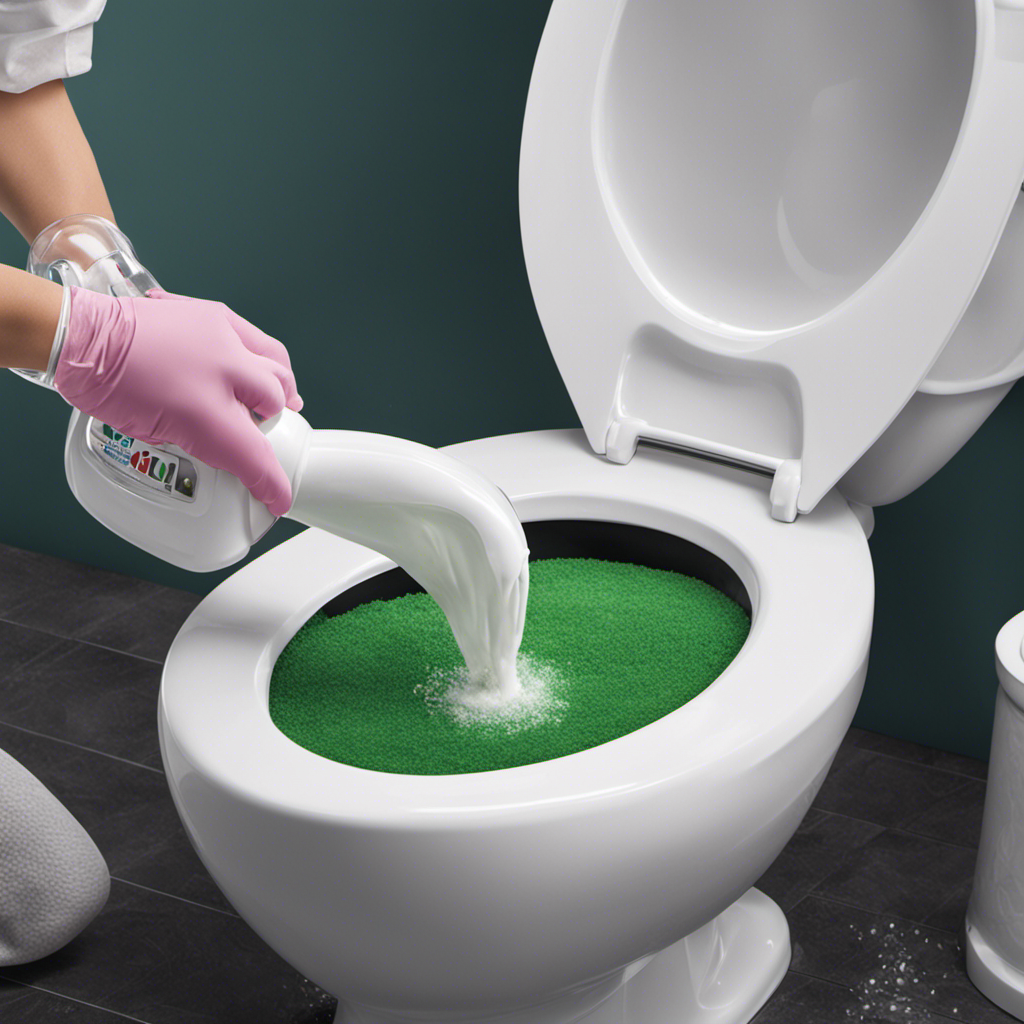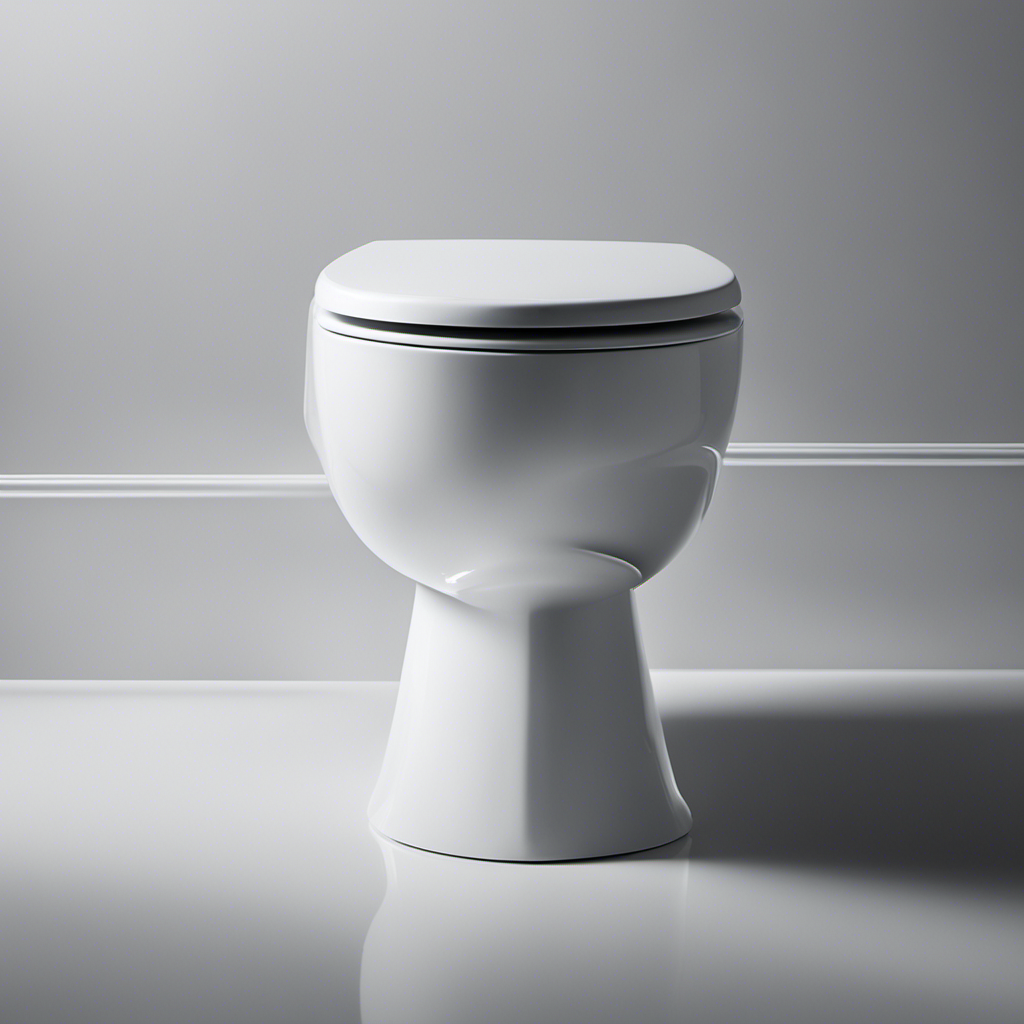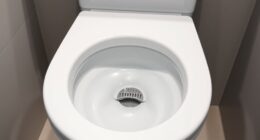As a seasoned plumber, I’ve encountered countless frustrated homeowners struggling with low water pressure in their toilets. It’s like trying to fill a bucket with a trickle instead of a steady stream.
But fear not, because I’m here to share my expertise on how to increase water pressure in your toilet. In this article, I’ll guide you through understanding the causes of low water pressure, checking for obstructions, adjusting the fill valve, and even cleaning or replacing the flush valve.
Let’s get your toilet flowing like a mighty river again!
Key Takeaways
- Check for obstructions in the water supply line by disconnecting and inspecting it for debris or blockages
- Adjust the fill valve to increase water pressure by using a screwdriver to adjust the water level clockwise
- Clean or replace the flush valve to improve water flow by removing and cleaning the valve assembly
- If low water pressure issues persist, consult a professional plumber for proper diagnosis and solution as adjusting the fill valve or clearing clogs may not always solve the problem
Understanding the Causes of Low Water Pressure in Toilets
To understand why your toilet has low water pressure, you need to know the common causes. Understanding water pressure is crucial in troubleshooting water pressure issues in toilets.
Several factors can contribute to low water pressure in toilets. One common cause is a clogged or blocked water supply line. Sediment or debris can accumulate over time, restricting the flow of water.
Another potential cause is a faulty fill valve or flush valve. If these components are not functioning properly, they can impede the water flow into the toilet tank.
Additionally, inadequate water pressure from the main water supply can also result in low water pressure in toilets.
Checking for Obstructions in the Water Supply Line
Check if there are any blockages in the water supply line. To increase water pressure in your toilet, it is crucial to ensure that the water supply line is free from any obstructions.
Start by turning off the water supply valve located behind the toilet. Next, disconnect the supply line from both ends, one end being the toilet tank and the other end being the water source.
Inspect the supply line for any debris or blockages. If you notice any, clear them out by gently running water through the line or using a small brush to remove the debris.
Once the line is clear, reconnect it and turn on the water supply valve. This simple step of clearing blockages and removing debris can significantly improve the water pressure in your toilet.
Adjusting the Fill Valve to Increase Water Pressure
Adjusting the fill valve can help improve the water flow in your toilet. It’s a simple DIY solution that can save you from calling a plumber. Troubleshooting common toilet problems and finding ways to fix them on your own is a great way to save time and money.
Here are a few steps you can take to adjust the fill valve and increase water pressure:
- Turn off the water supply to the toilet.
- Flush the toilet to drain any remaining water.
- Locate the fill valve, usually found on the left side of the toilet tank.
- Use a screwdriver to adjust the water level by turning the screw clockwise to increase the water pressure.
- Flush the toilet again to check if the water flow has improved.
Cleaning or Replacing the Flush Valve to Improve Water Flow
Clean or replace the flush valve in your toilet to improve the flow of water. The flush valve is an essential component of your toilet that controls the release of water during the flushing process. Over time, the valve can become clogged with mineral deposits or worn out, leading to decreased water flow and flushing efficiency. To address this issue, you can perform some simple flush valve maintenance or opt for a DIY flush valve repair.
Here is a table demonstrating the steps for cleaning or replacing the flush valve:
| Step | Cleaning the Flush Valve | Replacing the Flush Valve |
|---|---|---|
| 1 | Turn off the water supply to the toilet. | Turn off the water supply to the toilet. |
| 2 | Flush the toilet to drain the tank. | Flush the toilet to drain the tank. |
| 3 | Remove the flush valve assembly. | Remove the old flush valve assembly. |
| 4 | Clean the valve thoroughly, removing any debris or mineral buildup. | Install the new flush valve assembly. |
| 5 | Reassemble the flush valve and turn the water supply back on. | Turn the water supply back on and test the flush. |
Consulting a Professional Plumber for Persistent Low Water Pressure Issues
If you’re still experiencing persistently low water pressure, it may be time to consult a professional plumber to address the issue. While there are DIY methods for temporarily increasing water pressure in toilets, it’s important to understand common misconceptions about low water pressure in toilets. Here are some key points to consider:
-
Adjusting the fill valve: Many people believe that adjusting the fill valve will solve low water pressure issues, but this is often not the case. It’s best to consult a professional to properly diagnose and fix the problem.
-
Clearing clogs: Another misconception is that clearing clogs will automatically improve water pressure. While it may help in some cases, there could be underlying issues that require professional intervention.
-
Checking water supply: Some people assume that low water pressure in toilets is solely the toilet’s fault. However, it’s important to check the water supply to ensure there are no issues with the main line or other plumbing fixtures.
-
Upgrading fixtures: While upgrading fixtures can improve water pressure, it’s not always the solution for persistent low water pressure. A professional plumber can assess the situation and provide the best course of action.
-
Consulting a professional: Ultimately, if DIY methods and common misconceptions haven’t resolved the low water pressure issue, it’s best to consult a professional plumber. They have the expertise and tools to identify and fix the problem efficiently and effectively.
Frequently Asked Questions
Can a Clogged Toilet Cause Low Water Pressure?
Yes, a clogged toilet can cause low water pressure. It can lead to blockages in the pipes, affecting the flow of water. Signs of low water pressure include weak flushing and slow refilling.
Is It Possible for Mineral Deposits to Affect Water Pressure in a Toilet?
Yes, increased mineral content can affect water pressure in a toilet. However, regular plumbing maintenance, such as descaling the pipes, can help improve water flow and increase pressure.
Can a Faulty Water Supply Valve Contribute to Low Water Pressure in a Toilet?
Yes, a faulty water supply valve can contribute to low water pressure in a toilet. It is important to diagnose and troubleshoot the valve to determine if it needs repair. Low water pressure can negatively impact the performance of the toilet.
Does the Water Pressure in the Main Supply Line Affect the Water Pressure in the Toilet?
Yes, the water pressure in the main supply line can affect the water pressure in the toilet. If the pressure is low, it can result in a weak flush. Troubleshooting and fixing this issue may involve checking water pressure regulators.
Can a Partially Closed Shut-Off Valve Be the Cause of Low Water Pressure in a Toilet?
Yes, a partially closed shut-off valve can indeed be the cause of low water pressure in a toilet. When the valve is not fully open, it restricts the flow of water, resulting in reduced pressure.
Conclusion
After following these steps, your toilet water pressure will skyrocket to unimaginable heights! Your toilet will flush with such force that it will feel like a jet engine taking off.
You’ll never have to worry about a weak flush again! Say goodbye to those frustrating moments of standing by the toilet, waiting for it to refill.
With these simple adjustments, you’ll have the most powerful toilet in the neighborhood. Your friends and family will be in awe of your bathroom prowess.
